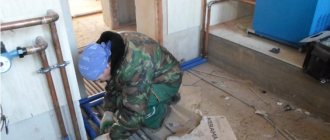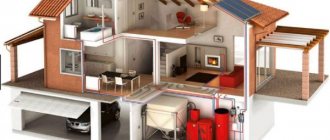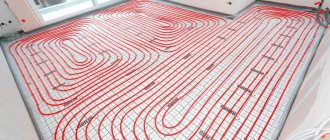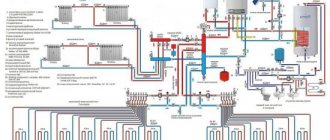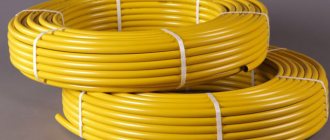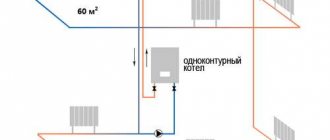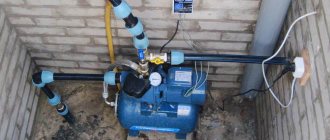Coefficient of hydraulic friction.
To determine the hydraulic resistance from friction against the pipe walls S tr, it is necessary to know the Darcy parameter λ - the coefficient of hydraulic friction along the length.
The technical literature contains a significant number of formulas from different authors, which are used to calculate the coefficient of hydraulic friction in various ranges of Reynolds numbers.
Designations in the table:
- Re – Reynolds number;
- k – equivalent roughness of the inner pipe wall (average height of the projections), m.
Another interesting formula for calculating the coefficient of hydraulic friction is given in [1]:
λ=0.11·[(68/Re+ k / D +(1904/ Re )14)/(115·(1904/ Re )10+1)]0.25
Vyacheslav Leonidovich performed verification calculations and found that the above formula is the most universal in a wide range of Reynolds numbers!
The values obtained using this formula are extremely close to the values:
- functions λ=64/Re for the zone of laminar flow in the range 10< Re <1500;
- functions λ=0.11·(68/Re+ k / D )0.25 for the zone of turbulent flow at Re >4500;
- in the range 1500< Re <4500, according to the analysis, there is a transition zone.
In the transition zone, according to Nikuradze’s experiments, the graph of the function λ= f (Re,D, k ) has a complex shape. It represents two conjugate reverse curves, which in turn are conjugated on one side with the curve of smooth pipes (laminar flow), and on the other side with straight lines of relative roughness.
This zone has not been fully studied, so it is advisable to calculate the hydraulic modes of the designed systems without entering this area: 1500< Re <4500!
The following figure shows graphs of the function λ= f (Re,D, k ) constructed using the above universal formula. The nature of the curves in the transition region corresponds to the Nikuradze graphs [2, 4].
The custom function in Excel KtrPipeWater(Rvoda,twater,G,D,ke) calculates the coefficient of hydraulic friction λ using the considered universal formula. In this case, everywhere further k e = k .
Attention!
- λ changes , which can cause inoperability of automatic control systems!
- PF KtrPipeWater(Pwater,twater,G,D,ke) with turbulent flow significantly depends on the value of ke - the equivalent roughness of the inner surface of the pipe. In this regard, you should pay attention to setting the objective value of ke , taking into account the pipes used during installation (see [2] pp. 78÷83).
Calculation of hydraulic resistance in Excel.
To facilitate routine hydraulic calculations, V.L. Polkovov. developed a number of user functions. A list of some of them, most often used in practice, is given in the table below.
Some clarifications on custom function arguments:
- GS diffuser (Pwater,twater,G,Dmin,Dmax,ke,L) – free dimensions;
- GStransitionDiffuser(Pwater,twater,G,Dmin,Dmax,ke) – standard transition;
- GSconfuser(Pwater,twater,G,Dmin,Dmax,ke,L) – free dimensions;
- GStransitionConfusor(Pwater,twater,G,Dmin,Dmax,ke) – standard transition;
- GSoutlet(Pwater,twater,G,D0,R0,Angle,ke) – free dimensions;
- GSotvodGOST(Pwater,twater,G,D,Angle,ke) – standard outlet.
It is advisable to use the given user functions taking into account the initial transportation section (the distance from one hydraulic resistance to the next hydraulic resistance). This makes it possible to reduce calculation errors caused by the influence of the “unsteady” nature of the fluid flow.
For turbulent flows, the length of the initial section must be at least:
Lstart=(7.88 lg (Re) – 4.35) D
For laminar flows, the minimum length of the initial section:
Lstart=B·Re·D
Here B = 0.029 according to Boussinex, and B = 0.065 according to Schiller, D is the internal diameter of the transportation system.
The following screenshot shows an Excel table with examples of hydraulic resistance calculations.
Literature:
- Chernikin A.V. Generalization of the calculation of the hydraulic resistance coefficient of pipelines // Science and technology of hydrocarbons. M.: 1998. No. 1. pp. 21–23.
- I.E. Idelchik, “Handbook of hydraulic resistance.” 3rd edition, revised and expanded. Moscow, Mechanical Engineering, 1992.
- HELL. Altshul, “Hydraulic Resistance”, second edition, revised and expanded. Moscow, NEDRA, 1982.
- B.N. Lobaev, Doctor of Technical Sciences, Professor, “Calculation of pipelines for water and steam heating systems.” State publishing house of literature on construction and architecture. Ukrainian SSR, Kyiv, 1956.
Link to download the file: gidravlicheskie-soprotivleniya (xls 502.0KB).
Other articles by the blog author
To main
Articles with similar topics
- Calculation of a pipeline with parallel sections
- Hydraulic calculation of pipelines
Types of SVO wiring
Although the operating principle of the heating system is the same (receiving and distributing heat throughout the home), its work can be organized in different ways. It is convenient to distinguish systems by the method of organizing circulation. Natural circulation is possible, when the coolant moves due to gravity, and forced circulation, when a pump copes with it.
Water heating circuits differ in configuration and scale; they can be single-pipe or double-pipe. They are subject to different laws, so the hydraulic calculation of the pipeline is carried out taking into account the differences. The following types of single-pipe heating circuits are common:
- With lower wiring (popular name “Leningradka”). The pipe passes through all the rooms in a circle and returns to the boiler. The advantage of the system: it has few pipes, its thermal power does not exceed 30-35 kW. The downside is the uneven distribution of heat and the impossibility of regulation.
Single-pipe circuit with bottom wiring Source termokraft.ru
- With top wiring (Moscow system). The supply line is located above the heating devices. The system can operate without power supply; the temperature in the batteries is distributed evenly thanks to the calculation and pipes with different diameters. The downside is the difficulty of smooth adjustment.
Two-pipe wiring is presented in the following varieties:
- Dead end system. A common option in which the working medium is supplied and removed from each battery through different lines (direct and return). This heating arrangement is found in different types of housing; its peculiarity is that the direct line (supplying heat) is longer than the return line.
- Two-pipe associated system (Tichelman loop). The return line starts from the first radiator, then the returns from the remaining radiators are connected to it, after which the coolant returns to the boiler. It turns out that along the forward and return lines the working medium moves in one (corresponding) direction. The system operates stably, distributes heat well, but is the most material-intensive.
Return line - Tichelman loop Source izion.pro
- Beam wiring (also known as fan, collector, cabinet). The pipes radiate from one point (the collector), and the control is also located here. The advantage of the wiring: it makes it possible to separately adjust the temperature (or turn off) of each device. The system is easy to automate and is simple to design and calculate the pipeline. Disadvantage: high installation costs due to the large number of pipes.
See also: Catalog of companies that specialize in water supply, sewerage and related work


